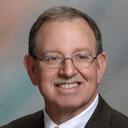Sexually transmitted diseases in men.
Keywords
Abstract
Sexually transmitted diseases are the most common infectious diseases in the United States. Physicians, nurses, and other health care providers are uncomfortable discussing sexual issues with their clients. Therefore many health care needs are not addressed, and many opportunities for education aimed at preventing STDs are missed. In the periodic health history, the health care provider must elicit information about sexual practices (vaginal,oral, or anal intercourse), sexual orientation (heterosexual, homosexual, or bisexual), sexual risk behaviors (ie, unprotected intercourse with multiple partners), contraceptive use (particularly condoms), and prior STDs. Based on this information, the health care practitioner moves to more specific questions regarding sexual health. The health care practitioner asks about sores on the penis, dripping or discharge from the penis, staining of the underwear, testicular pain, and scrotal swelling. For the client who engages in oral sex, the health care practitioner asks about sore throat. For the client who engages in anal intercourse ask about diarrhea, rectal bleeding, anal itching, and pain. Probe the desire phase, the arousal phase (erection), and the ejaculation phase. Ask about the desire for fatherhood and concerns about fatherhood. An important part of health care is prevention. Culturally specific and sensitive information should be available for patients. Patient education should not consist of simply handing a brochure to a man. Using the brochure as a guide for including all the necessary information and ascertaining the man's understanding may be a very effective method of patient education. For men who are at increased risk for STDs or who present with symptoms of STDs, offering diagnostic testing is necessary. Men who have multiple sexual partners especially need diagnostic testing and prevention counseling. The CDC recommends annual HIV and hepatitis C testing for men who have sex with men and other men who have increased risk for contracting HIV. Another important consideration at the periodic screening examination is the vaccinations that are to be recommended. Men who have sex with men should receive hepatitis A and hepatitis B vaccine. Additionally, it is recommended that all adolescents should receive hepatitis B vaccine.


